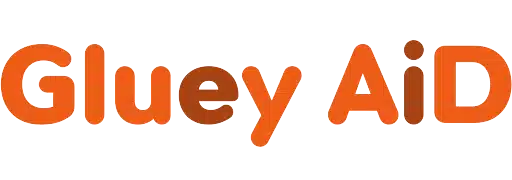When choosing between B7000 and E8000, you should know the specifics first. In this B7000 Vs. E8000 article, you are about to understand all the critical differences between B7000 and E8000.
Page Contents
Article Highlights
- B7000 glue provides strong adhesion with preferred durability with the transparent liquid formation.
- E8000 is much more durable in higher heat conditions with self-leveling properties alongside much stretchiness.
- Each adhesive is good enough without any differences for their tasks until some specific conditions and requirements are different for application.
These two tubes of glue look almost similar in their packaging and performances. Depending on some minor properties, their operational method can be dissimilar.
With detailed analysis and distinguishing between both types of glues here, you can see the differences between these two types of glue. Let’s see the comparison in detail.
Learn More: E6000 vs. B7000
B7000 Vs. E8000
About B7000
With rubber-based glue, the B7000 appears transparent while applying and even after application.
The B7000 glue is highly adhesive and generates strong bondings with desired components.
Besides, B7000 is compatible with glass, metal, ceramic, PVC, PP, PE, ABA, bamboo wood, sponge, nylon, leather, rubber, cloth, etc.
This glue can be used for repairing, bonding, and decorating. The glue comes into a tube with a narrow needle-shaped nozzle and airtight cap.
The nozzle helps to apply glue on smaller particles as much as you want. Also, the airtight cap helps to use the glue multiple times.
Moreover, B7000 glue is barely noticeable after application because of its transparent color.
The glue can be used for decorating purposes such as DIY crafts, jewelry decorations, toy repair, and more.

The glue has stable water resistance with vibration resistance. B7000 glue can sustain at -40° to 66°C.
Ensure that the surface where it is supposed to be used is cleaned and not oily or greasy.
To use it properly, gently apply the glue, wait for 4-6 minutes, and combine another piece to join with a little push.
Wait for a few hours or, for even better results, wait 24-48 hours to cure. Ensure not to make skin or eye contact with the glue while using.
With all these features and application methods, the glue is an easy-to-use product for any DIY enthusiast or professional.
Learn More: T7000 Vs. E8000
About E8000
If you are a DIY enthusiast or professional, another good option for you is E8000 glue. It is an excellent choice for repairing or decorating purposes.
This glue bonds easily with glass, wood, metal, paper, leather, rubber, stone, polyvinyl chloride, acrylic, etc.
This tape can be used for jewelry, toys, phone repair, tables, small electronic components, acrylic nail art, cloth, textiles, and so on.
This glue has less odor and is not harmful to contact with the hands. With a needle applicator and anti-clog cap, this product is a versatile tool for multiple uses.
Besides, the glue leaves a crystal clear appearance. It is hard to detect at first glance. With water and shock resistance, the adhesive is more durable with time after application.
This glue can sustain at -35°c to 90°C, and hardness after curing is 65-80a. So, it is much more robust in adverse conditions.
Specifically, this glue is more accessible on cloth or textiles because of its flexibility and plasticity. Also, the glue can be stretched to 900% of its length.
E8000 takes a few minutes to cure on its surface level and takes 24-48 hours to cure completely. It is also essential to avoid eye contact and reach of children.
Overall, the E8000 adhesive includes many features that make it easier to work with.

Read More: E6000 vs. E6000 Plus
Which One is Better, B7000 or E8000?
Both B7000 and E8000 are better for adhesion and bonding with required components. Also, both are transparent.
However, some application eligibility for different purposes and conditions can make a few differences.
On one side, the B7000 can stand at -40° to 66°C and on the other side, the E8000 can stand at -35°c to 90°C.
Therefore, the E8000 is preferable to apply on electric devices than the B7000 as electronic devices emit heat, which can weaken the adhesion of the glue if its tolerance limit is lower.
Again, when it’s about applying glue on cloth or textile-based materials, the glue must be more flexible and elastic.
E8000 glue can be stretched to 900% of its initial length, which makes it one step ahead of the B7000.
Editor’s Opinion
Following the above illustration of B7000 and E8000, their similarities and dissimilarities are much more evident.
These glues are pretty much the same in their appearances and applications. Each glue has strong adhesion and durability with time.
But when it comes to heat tolerance and stretchiness, both are not that similar.
If you are looking for long-lasting glue in higher temperatures, such as electronic devices that emit heat, then E8000 is an intelligent option.
Also, if you are about to choose elastic and stretchy glue, E8000 is a better glue. Otherwise, both tapes are good in their performance and usability.
Following all the information about B7000 and E8000 given in the B7000 Vs. E8000 article is enough for you to pick the glue for your specific task. Choose accordingly!




